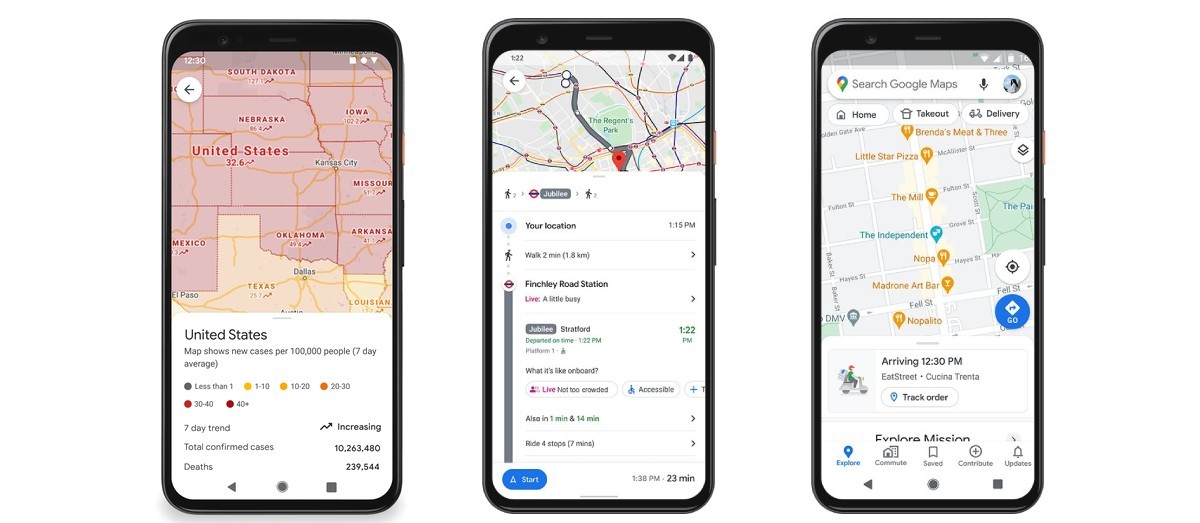Pakistan’s Gross Domestic Product (GDP) may grow in the range of 1.5 percent to 2.5 percent in the current financial year of 2020-21.
This is predicted keeping in view the improvement in the macroeconomic indicators and the possible risks to the economy in line with the second wave of COVID-19 pandemic, according to the Annual Review issued by State Bank of Pakistan (SBP).
These growth projections are subject to risks, including the evolution of COVID-19, extreme weather conditions, external demand, and progress on the reform front.
It is pertinent to mention that the federal government has set the GDP growth rate target of 2.1 percent for the financial year FY21. Asian Development Bank (ADB) and World Bank (WB) forecasted a GDP growth rate of 2 percent and 0.5 percent respectively for FY21.
ALSO READ
Economy Shows Signs of Recovery Despite COVID-19: PBC
Pakistan has managed to control the coronavirus spread whilst the number of infected has shown an increase, the overall level of active cases remains significantly lower than the peak observed in June 2020.
While the prevalent risk of another spike calls for a continuation of social distancing norms, the reopening of the economy (including services) has helped reduce some of the uncertainty around the overall macroeconomic outlook.
Preliminary customs’ records for the first quarter of FY21 show a decline of 0.7 percent YoY in the country’s exports, although a seven percent increase was recorded in September.
SBP projected the export values within the range of $23.4 to $23.8 billion in FY21 – higher than the $22.5 billion recorded in FY20.
It also projected that the remittances inflows are likely to settle at $22 billion to $23 billion.
Similarly, the SBP expects full-year imports to remain higher than the last year, given the anticipated pickup in economic activity following the lifting of lockdowns and firms’ efforts to replenish inventories.
The import bill may cross a value of Rs. 43 billion in the current financial year. In particular, the concessions for the construction industry and progress on housing finance would revive steel imports.
Also, lower domestic production and supply-management issues have necessitated imports of wheat and sugar.
Given the stability in oil prices, domestic fuel prices are likely to remain steady during FY21. However, as previous adjustments in the power and gas tariffs are due, there is an upside risk to overall energy inflation. Conditions in the domestic food market are also subject to risk.
ALSO READ
Weekly Inflation Falls 0.07%
The recent resurgence in wheat and sugar prices continues to highlight commodity-management problems in the country.
Moreover, food prices may also come under pressure due to widespread torrential rains and increased risks of flooding, which may affect crop yield. In contrast, the non-food-non-energy segment of the Consumer Price Index (CPI) is expected to ease further, as chances of a significant pickup in domestic demand remain low due to the weak financial position of businesses and households.
Overall, the SBP expects headline inflation to fall within the range of 7-9 percent in FY21. On the fiscal side, challenges remain as the government continues to focus on addressing COVID-related economic and social outcomes and supporting the initial economic recovery.
For the full-year, the government has set the target for the fiscal deficit at 7 percent of GDP with the primary balance also estimated to show a deficit of 0.5 percent.
The current account may show a deficit of 1 to 2 percent of the GDP in FY21, the SBP report stated.
ALSO READ
Economy Picks up, External, Internal Sectors Showing Good Performance: Hafeez Shaikh
The improvement in the expected business confidence index was more pronounced, as it touched its second-highest level since the start of this survey. Importantly, this optimism has also begun to reflect in planned investment activity in the country.
The funding requests under the SBP’s Temporary Economic Refinance Facility (TERF) have risen sharply in recent weeks. The scheme, which provides subsidized financing to businesses undertaking Capital expenditures (CapEx) or Benchmark Regulations (BMR), has so far attracted 338 projects. These developments, along with optimism in the housing and construction sectors, could help accelerate the economy’s recovery process in FY21.
The post SBP Predicts Pakistan’s GDP to Grow by Up to 2.5 Percent in FY21 appeared first on .
Continue Reading


![Here’s How Things Unfolded in PSL 5 Final [Photos]](https://news.masscommunicationtalk.com/wp-content/uploads/2020/11/PSL-Final-1.png)